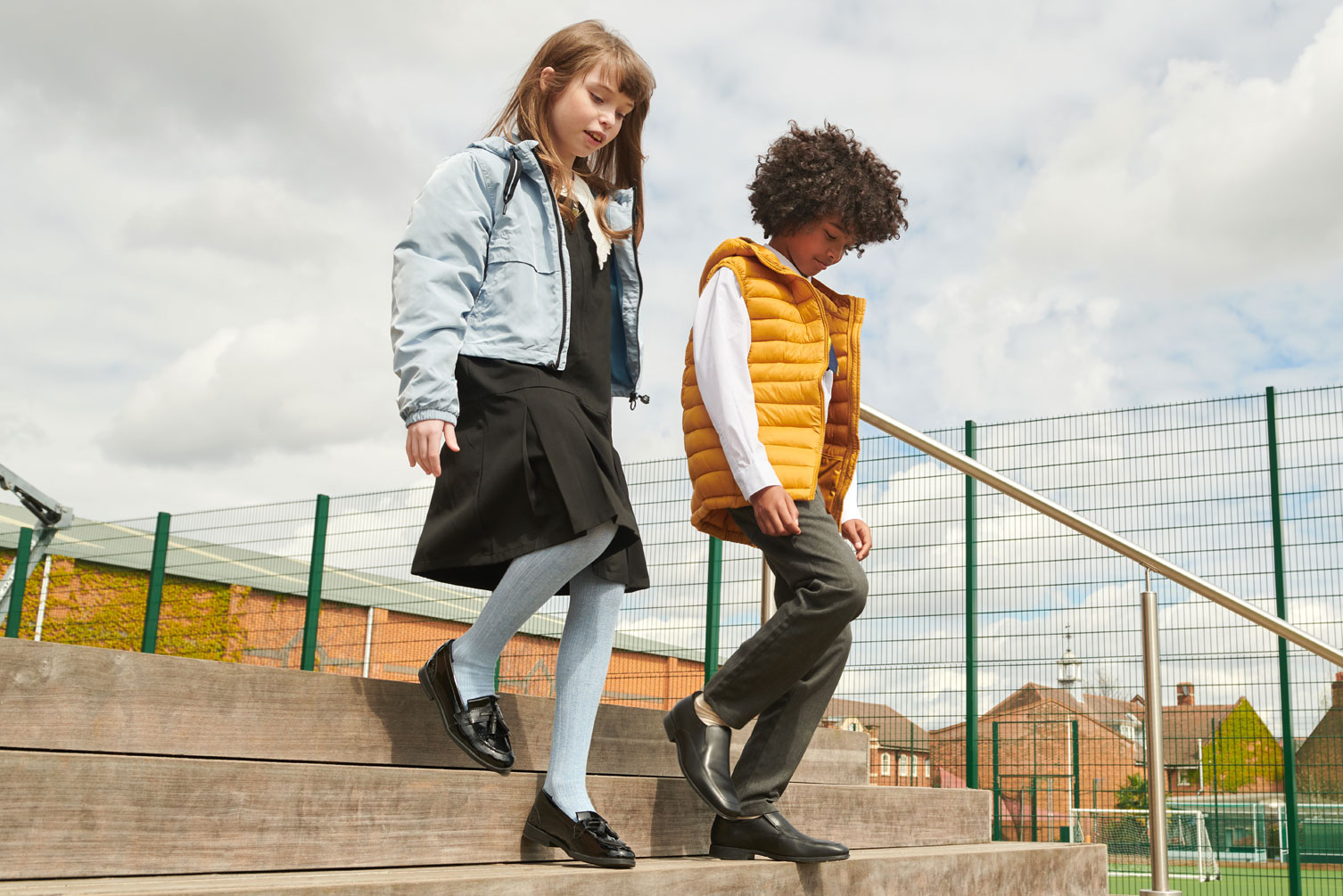
Slip-on shoes are shoes that have no buckle or fastening and the upper covers only the toes and in some cases extends to the lower part of the foot arch. Slip-on shoes come in many guises, but in their truest form they are easy and convenient to slip onto a foot. This makes them appealing to parents who are looking for simple options for young children, but slip-on shoes will not benefit a child who is growing at pace and needs to feel liberated by their footwear, not impeded. Here we dissect the nature and fit of a slip-on shoe and show you what to look for if it’s a style that your child is interested in.
Start-Rite does offer a selection of slip-on shoe styles in our older children school shoes collection. Due to the rapid physical development from first walking and up through Primary school, we do not recommend little ones wear slip-on shoes until they are heading to Secondary school. And even then, it’s important to get the right fit for the foot. Read on to discover how to distinguish between a slip-on shoe that will support a growing child and one that will hinder natural development.
When you think of a slip-on shoe you might automatically associate them with women’s shoes and high heels. Slippers, sliders, clogs and flip flops can all be classed as a slip on because there is no buckle and little fuss with getting them onto your feet. In fact, the Slider style slip-on, which is like a flip flop but has a wide strap over the arch while exposing the toes is growing in popularity with men because it’s a gender-neutral laid back style that is super easy to wear in hotter climates and for lazy days at home.
We offer a popular selection of slip-on shoes for older boys as the style lends itself to a more mature look. For example, College has a sleek, slim look with a sculptured heel for comfort and support. Its mature lines are complimented with concealed elastic and a biomechanically engineered sole to support boys who will still be maturing throughout Secondary school.
Made for all-day comfort and durability, our black girls' slip-on school shoes come in a range of styles to suit every taste. From classic loafer styles which provide a precision fit and maximum support with a longer upper that extends up the foot arch to avoid feet slipping to fashion-first styles, where the slip-on appeal is complemented with design details to hold the foot within the shoe and support healthy development. All our slip-on shoes include cushioned soles and Start-Rite proprietary technology.
A child’s shoes must be designed for the shape of a child’s foot and slip-on shoes will not always provide the best support for a growing child. The shape and demands of a child’s foot are very different to that of an adult foot. To protect a child’s natural development, they must wear children’s shoes designed for children, not adult shaped shoes made in smaller sizes.
When we talk about natural development, we mean the whole of a child’s body is informed by how the child walks and how the child walks can be affected by the shoes they are wearing. Some slip-on shoes can cause the muscles in the feet to contract instead of stretching out, as the toes bunch up to keep the shoe in place. Over time, this repetitive stress can increase the risk for tendonitis, Achilles problems and a painful condition called plantar fasciitis. It will also send the wrong signals to the brain that the foot is compromised, and the brain might compensate for that by changing the way the child walks.
A slip-on shoe must provide the correct support underneath the foot too. Many styles are made from thin material and provide no added protection along the sole of the shoe. This can lead to arch and heel soreness as well foot pains from the excessive pressure and reduced shock absorption. And it’s not just your feet that can be negatively affected, flat slip-on shoes can aggravate knee joints and cause problems for the body’s proper alignment.
A child’s gait – which is the way they stand and hold themselves as they move – is not fully formed till around the age of 16. Flat shoes that offer little protection can affect the function, structure and motion of the body, so it’s very important to consider how well the slip-on is protecting the whole of your child’s foot, if this is their style of choice.
A slip-on shoe should offer a child support both underneath, around and over the arch of the foot, to enable the child to walk comfortably and naturally. Support around the heel will ensure the shoe does not slip and wider feet will hold a slip-on shoe better than narrow feet. If the shoe slips at the heel, the toes will crunch up to keep it on and the leg muscles will tense around the calf and upper thigh, sending all the wrong signals to the brain. Interestingly the brain does not associate the action with the shoe, but with the human, so will compensate accordingly. If you need more reassurance on which shoes will fit your child, follow our Check the Fit guide.
Author: Vista, published 22-11-2022.